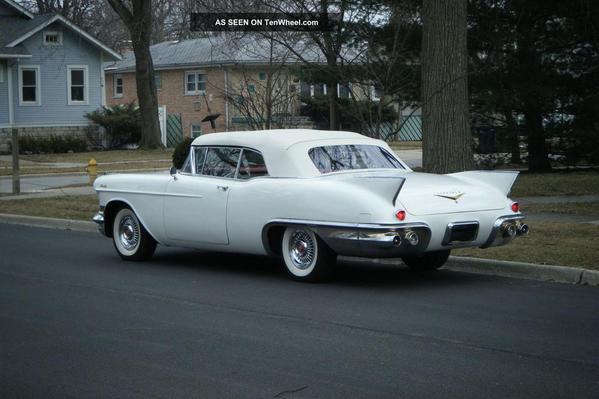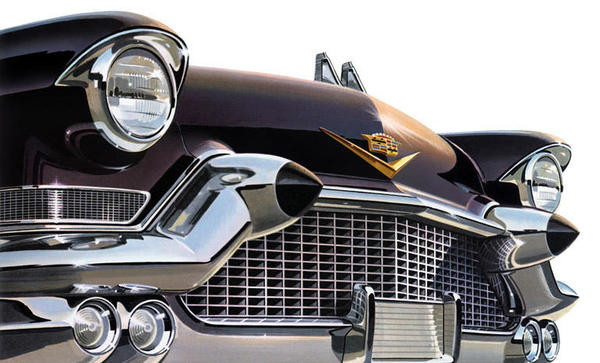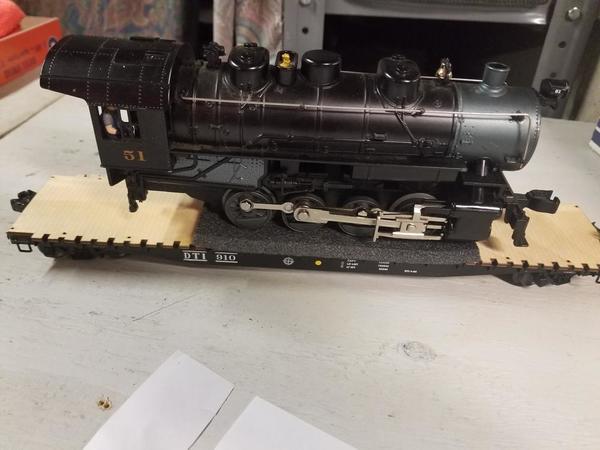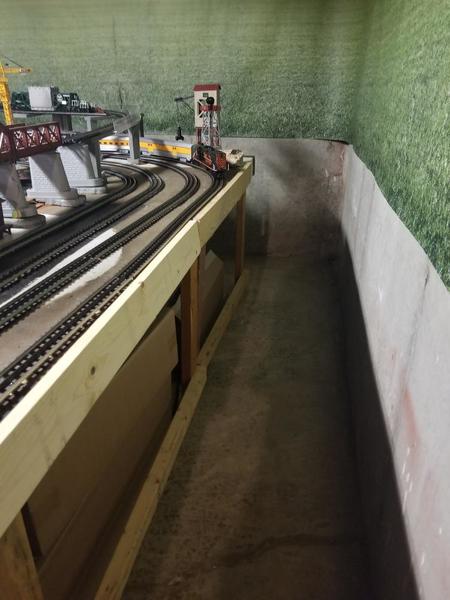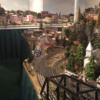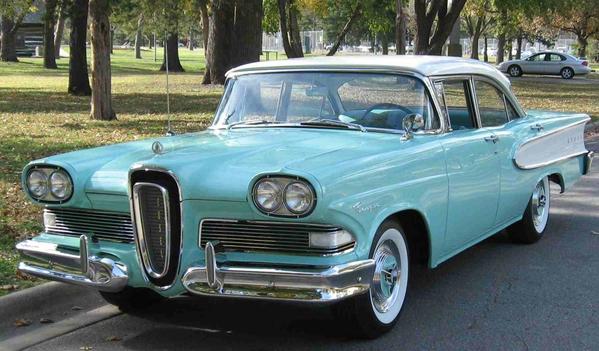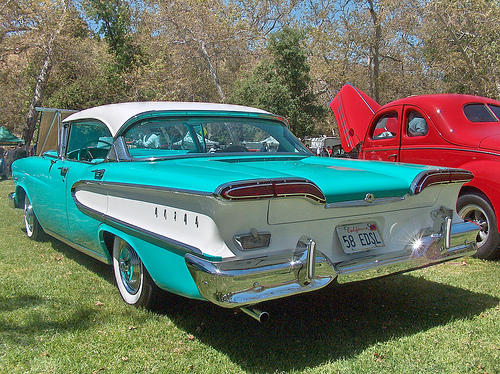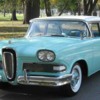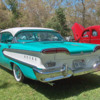In the years that have been running trains, trains have occasionally run off the table. Not so much recently but when I was a kid, I liked to run the trains fast. They would derail, down they would go. You'd pick them up, put them back on the table and you kept running. The worse that happened was a scratch or two. Had an event today with a nice heavily detailed Lionel Reading scale smoking Caboose. It got caught on a over hanging wire, down it went , hit the floor and it cracked in three pieces. It was a $70 caboose. Point is that the plastics used in today's trains are brittle and thin. They no longer pass the drop test. They just don't build them like they use to.
Replies sorted oldest to newest
Ah, the good old days when these were toys. My old 671 went off the table a lot when we raced it, and it just kept on chugging, of course it was made out of something more akin to a cast iron fry pan than a delicate model![]() . Given that these are no longer kids toys, by price or who they are marketed to, not surprising they aren't made to be that durable.
. Given that these are no longer kids toys, by price or who they are marketed to, not surprising they aren't made to be that durable.
I remember dumping a 2330 GG1 off my layout a long time ago. Picked it up put it back on the track and away we went. I wouldn't be surprised if it shipped the concrete floor lol.
I don't know about all the older trains always being indestructible back then. Some of my train cars from the late forties were made out of Bakelite plastic and they are prone to breakage if dropped. Granted a good amount of the trains of today have small delicate parts, that can easily break. The postwar trains did not have these detail parts, so of course there is less chance of damaging something. For the most part I agree that the trains from the Postwar years tended to be tougher and more reliable.
I’ve had quite many old postwar locos that broke a classification light off when it took a spill. Nothing’s perfect, after all.
Dennis LaGrua posted:In the years that have been running trains, trains have occasionally run off the table. Not so much recently but when I was a kid, I liked to run the trains fast. They would derail, down they would go. You'd pick them up, put them back on the table and you kept running. The worse that happened was a scratch or two. Had an event today with a nice heavily detailed Lionel Reading scale smoking Caboose. It got caught on a over hanging wire, down it went , hit the floor and it cracked in three pieces. It was a $70 caboose. Point is that the plastics used in today's trains are brittle and thin. They no longer pass the drop test. They just don't build them like they use to.
Maybe they should make model trains out of flubber...![]()
Rusty
Rusty Traque posted:Dennis LaGrua posted:In the years that have been running trains, trains have occasionally run off the table. Not so much recently but when I was a kid, I liked to run the trains fast. They would derail, down they would go. You'd pick them up, put them back on the table and you kept running. The worse that happened was a scratch or two. Had an event today with a nice heavily detailed Lionel Reading scale smoking Caboose. It got caught on a over hanging wire, down it went , hit the floor and it cracked in three pieces. It was a $70 caboose. Point is that the plastics used in today's trains are brittle and thin. They no longer pass the drop test. They just don't build them like they use to.
Maybe they should make model trains out of flubber...
Rusty
The argument that more fine detail makes the train fragile is probably valid but I abused my trains way back when, ran them off the table many times and they just kept on running. I honestly do think that trains were more durable in the P/W era and overall of higher quality.
Moonson posted:
Well your high school car may survive a little better but who would care when you are dead or severely tangled in the metal and rescue needs to use the Jaws of Life to rip up the remaining car and extract your ***.
Moonson posted:
At 10 mpg in city for the caddy, I'll go for the modern car. And with forward and side airbags, I stand a greater chance of walking away if the modern car gets into an accident as well.
Co-incidentally, I've been going through a few American Flyer engines I have. Every one with a metal boiler has that slightly pinched-in pilot and stress marks from previous dropsys and nose-dives.
I put a nice thick area rug under my train table...Just in case hope it works!
OK, I got one.
I'm sitting at a traffic light with my mother by my side. I had my permit for a few weeks so she had to be with me. I see a car speeding towards us in my rear view mirror and he's not slowing down. He rear ends my car. I throw out my hand to prevent my mother from going forward. I hit her face slightly and she turned towards me to of course, yell at me or worse. Then ... bang!! the car hits us from behind. She asks why didn't I tell her?
I get out of the car fearful of what my dad will do to me let alone my mom who is already mad. There's a small scratch on the bumper of our '65 chev imp. The guy is in rough shape behind us. His 77? Dodge has the motor pushed into the pass compartment. The whole front end was smashed.
I go back to see if he's OK, and he's puking. All you can smell is alcohol.
Anyways, the point is they stopped making cars crash proof years ago.
Now they crumple to absorb the crash and save people.
BTW... I got the ticket. The officer said I had not driven long enough. So even though the light was red and I was stopped, it was my fault?
When a neighbor helped me build my first train table in the early 50s, I placed a rail around it. Every table I've built since then also has a railing at critical points.
Deuce posted:Moonson posted:At 10 mpg in city, I'll still go for the modern car though. And with forward and side airbags, I stand a great chance of walking away.
Hah,good luck with that old car....![]()
And as far as new trains go....I'll just take your word for it.![]()
I remember drag racing trains . My cousins Santa Fe Alco was the fastest . I can’t remember how many times it bounced off the wall and floor.
Moonson posted:
That Caddy is a beautiful and stylish car. But it seems to me that it would do a lot more damage backing into something than going forward!
MELGAR
Grampstrains posted:I guess all those broken marker lights and cabs on postwar trains are fluke?
What's BS (and no fluke) is that zincpest occurred in the 20's, 30's, and 40's and yet you still have the same problem today on cars and locos that cost hundreds of dollars or more. The cause was understood and yet the same old problem still occurs today fairly often on either brand new or fairly new trains. The cause of zincpest has been known for probably 70-80 years and yet we still see the same old problem due to nothing more than lazy attitudes and lack of a serious interest in quality. When the material is properly mixed and poured with no lead or less than the solubility limits of the base metal Zinc there will typically be no problem. You get crazy bent cab corners instead of direct fractures. Markers on locos like the 224E don't break if the loco falls but that is due to a very robust less scale like design. Likewise cheaper railking locos that have similar style markers also likely don't break. Postwar more scale like markers that do break with a drop or derailment on the table are no different than you will get on a modern expensive loco. Pewter markers on repro boiler fronts are an entirely different source of problem.
Postwar trains were certainly not perfect, but to still have the same metallurgy problem 70-80 years later on new high dollar trains is total BS.
Strictly opinion... well maybe not...
Grampstrains posted:I guess all those broken marker lights and cabs on postwar trains are fluke?
Perhaps it's all relative, depending on the wildness and recklessness of the kid tossing, pushing, or operating the train?
This Legacy #3305 NP U boat survived a 38" fall to a concrete floor, no damage, the hatch for the smoke exhaust popped loose. I was speeding up (odessy 45 to 75) around a 072 blind curve, it was pulling a heavy 15 car freight, but the car right behind the engine is a flatcar with a locomotive on it, to much weight increased too fast held the engine up, learned from that so quickly installed 1x4 guard railings.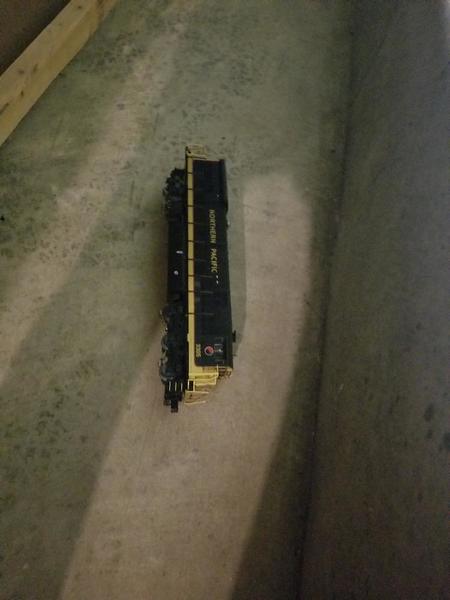
Attachments
MELGAR posted:Moonson posted:That Caddy is a beautiful and stylish car. But it seems to me that it would do a lot more damage backing into something than going forward!
MELGAR
I recall a video that was done a few years ago showing a then 50 year old unmodified Chevy in an offset head on with a then brand new Chevy (maybe a Malibu but I don't remember for sure) and Both were totaled of course, but the occupants in the new car would have survived. Not so for the occupants in the 50 year old Chevy. Both the Spear of Death and drivers front wheel and suspension coming into the drivers chest and lap did the job. No crumple zones in the old cars. Doesn't mean I don't want a cool old car anymore, but it was pretty eye catching. You can bet one of the mods to my 63 Falcon and 67 Mustang is to get rid of the Spear of Death and upgrade to a rag joint collapsible column. I hate all the plastic crap and the lack of metal in new cars. I hate that a minor fender bender costs $1,000's and requires an outright replacement of every part behind the impact area, but they are definitely safer. All with respect to an apples to apples crash though. You take a land yacht and run it into a Fiat 500 and you know what will happen!
I still like the rumble of a healthy V-8 a good set of rear gears and a four speed to row through though.
Ha!!, here is the youtube link it was '59 and '09.
https://www.youtube.com/watch?v=joMK1WZjP7g
BTW, that 57 Cad is a sweet ride for sure.
RJR posted:When a neighbor helped me build my first train table in the early 50s, I placed a rail around it. Every table I've built since then also has a railing at critical points.
I take no chances: 1x2 railing and minimum 4" clearance everywhere.
Sal V. posted:I put a nice thick area rug under my train table...Just in case hope it works!
Me too, under and all around. Broadloom.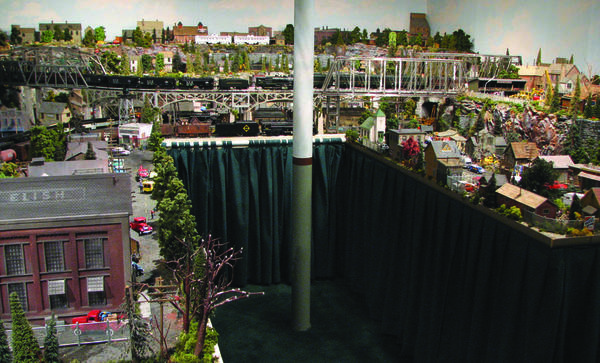
Here are a few areas of it....
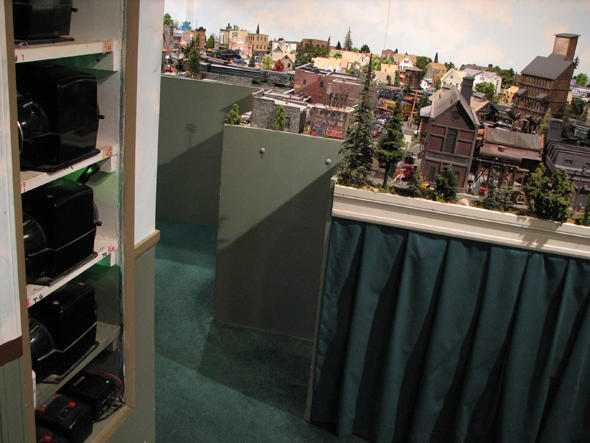
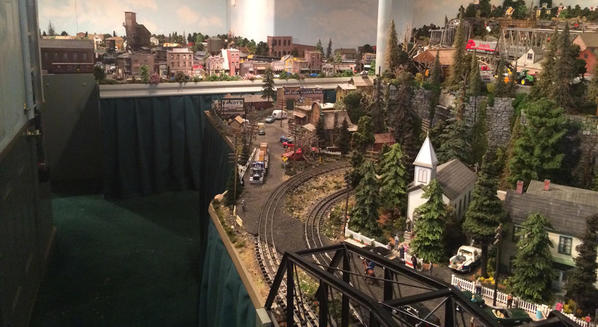 I had the carpeting laid back in 1995, and it sure has paid-off, especially with helping my knees and elbows to get less hard wear.
I had the carpeting laid back in 1995, and it sure has paid-off, especially with helping my knees and elbows to get less hard wear.
You were smart to do it, Sal V. You will see.
FrankM
Attachments
How does it hold up if you put it in the blender?
Moonson posted:
You might get the worst of it, despite the fact that that caddy probably weighed well over 2 tons, whereas the person in the modern car might get injured. That 57 caddy likely didn't have seat belts (not mandated until 1963), so you might have been thrown through the windshield (which likely wasn't safety glass), or you end up hitting the steering wheel which wasn't designed to collapse, whereas the person in the other car would likely be in a three point harness, front and side airbags, crumple zones, steering collumn that would collapse....and more importantly, in a modern car with the handling and braking (something that caddy had like 0 of either), it likely could swerve out of the way of that car, like comparing the maneuverability of a tank with a sports car. The newer car would most likely be totaled but the occupants survive, not so sure of the caddy...
and that car likely got maybe 7-8mpg...
Deuce posted:Moonson posted:At 10 mpg in city for the caddy, I'll go for the modern car. And with forward and side airbags, I stand a greater chance of walking away if the modern car gets into an accident as well.
There is another parallel with the old cars/post war trains and new ones, partly ironic in nature. I have heard plenty of people telling me how the cars of that 'golden age' were so much better, how cars these days are so expensive, have all this stuff on it can go wrong, that you could fix one of those cars with a wrench and a screwdriver, how those cars were 'quality' and so forth versus the 'cheap crap of today'......while yeah, cars today can be expensive to fix after an accident (partly because in the good old days, with bolt on panels, it was a lot cheaper to repair than unibody construction), but it is kind of ironic in the sense that we complain about how modern trains with all their electronic 'crap' makes them fall apart while the post war stuff just ran and ran, yet modern cars are a ton more reliable and long lasting then those cars of the so called golden age, they don't require the maintenance those cars required, and even the cheapest car out there will likely outlast by a factor of many times cars from those eras......doesn't mean I don't love old muscle cars, but it kind of shows that if modern trains aren't reliable, it isn't the electronics, it likely is the way they are made.
So, I guess we're to expect our models nowadays to have the finest of detail and survive a 3-4 foot drop unscathed.
We like to wax on poetically about the durability of postwar trains, but all you have to do is take a look into the "junk boxes" under the tables at swaps and see all the stuff that didn't make the cut.
Rusty
They don’t fail the drop test, they fail the hitting the ground test
@rusty-
There is that, too, I am sure there were a lot of failures back in the old days, it was just well hidden. The other thing was back in the day if something broke on a post war engine it was easy to fix, you had relatively few detail parts that could be replaced pretty easily, and in terms of the running gear it was a pretty simple beast, if an e-unit went or an armature shorted or a roller wore down really easily replaced (very much like on old cars) and were available in abundance because of how many were produced and not to mention over how many years, parts from a 1940's post war engine likely could be replaced with parts from ones in the 60's and 70's, for example. Modern trains are apples and oranges with the old ones, about all I could wish for (which isn't likely to happen) is that parts are available when they do break, problem is lot of the boards in the engines for example are custom.
Well maybe you should stop racing your scale big boy around those 036 curves ![]()
A Toyota Corolla spun out and I broadsided it with my 1973 Oldsmobile Toronado. The guy was lucky to get out alive. The Toyota was totaled. The Toronado had a small bumper scratch.
I agree with Bigkid. Years ago I was a shade tree mechanic, and often practiced my trade on my cars (I still have all the tools needed to replace valve seals on a 1973 Chrysler 400 engine, and they were used regularly.) Nowadays, there's been nothing to do but oil changes, and those not as often.
I put a lot of hours into repairing the "complicated mechanics" of postwar trains (brushes, E-units), and I only had 3 locos. Now I have 27 DCS locos, and spend little time repairing. The 7 PW Lionel locos (except for one that now has PS2) gather dust.
You can bet one of the mods to my 63 Falcon and 67 Mustang is to get rid of the Spear of Death and upgrade to a rag joint collapsible column.
Do you have any concerns about the gas tank in your 67 Mustang?
If I understand the construction correctly, the old Mustangs had the gas tank as the floor of the trunk, and were subject to the same fire hazard with a rear end collision as the Pinto.
I had a 68 Mustang. Didn't worry about it back then. If I had one today, I'd be looking for a solution.
As others have posted, an old car might stand up better to a crash, but the occupants would be in better shape in a modern car.
Were trains made tougher during the postwar period? .... I think so. I'd guess that the pieces were molded with a larger cross section, making them stronger. Still, I've had many broken postwar trains pass through my hands and seen many more. Some engines are famous for problems, like the cowcatcher on the postwar 247.
That 247 mold was used during the modern era too. I have two blue shells, marked 1989, that had their cowcatchers snapped off. I glued them back with J.B. weld and added a fillet epoxy to act as reinforcement.
Dennis LaGrua posted:They just don't build them like they use to.
Which I am reminded of whenever I see my MPC era boxes with the tagline "Big, Rugged Trains, A Tradition Since 1900."
So...you abuse the product and when it breaks it's the fault of the product? C'mon!
Moonson posted:
Cars of the 50's did, indeed, have a personality at the front grill, didn't they?
Reminds me of Ernie Kovacs' (for those of you old enough to remember the comedian) comment regarding the Edsel upon its debut...
"The front end looks like it's looking for it!......
...and the rear end looks like it found it!!"
![]()
Attachments
My $600 cell phone has been dropped dozens of times even on concrete floors. It has a few scratches but it still works perfect. Is is possible to engineer some ( but not all) drop protection. They got to beef the new stuff up a bit but that will hurt the replacement market.
There are many things I hope will improve. Dropping on concrete proof, is not on my list.
RickO posted:Deuce posted:Moonson posted:At 10 mpg in city, I'll still go for the modern car though. And with forward and side airbags, I stand a great chance of walking away.
Hah,good luck with that old car....
And as far as new trains go....I'll just take your word for it.
Yep. I've seen this video. Modern cars will make mincemeat out of those old things. The old ones would then make mincemeat out of you. Not a lot of "engineering" there. The new ones will sacrifice structures - as they should and are designed to do - to protect the passenger compartment. Admittedly, the old car in the video was only a Chevy, not the best cars around then, but that's not the point: many would act pretty much in the same way.
Modern cars are also typically, foot for foot, heavier than the old ones. All those beams and pillars (found any "two-door hardtops" lately?) and things. 4000lb or so mid-size and above vehicles now are the rule; then, they were the exception. Those old cars were pretty much hollow (see video).
As to the trains - models and toys are not the same thing. My models are not toys. I don't care if they break on impact - I don't drop them. Any "model" that would not be damaged after a four-foot drop is not a "model" that I would want.




